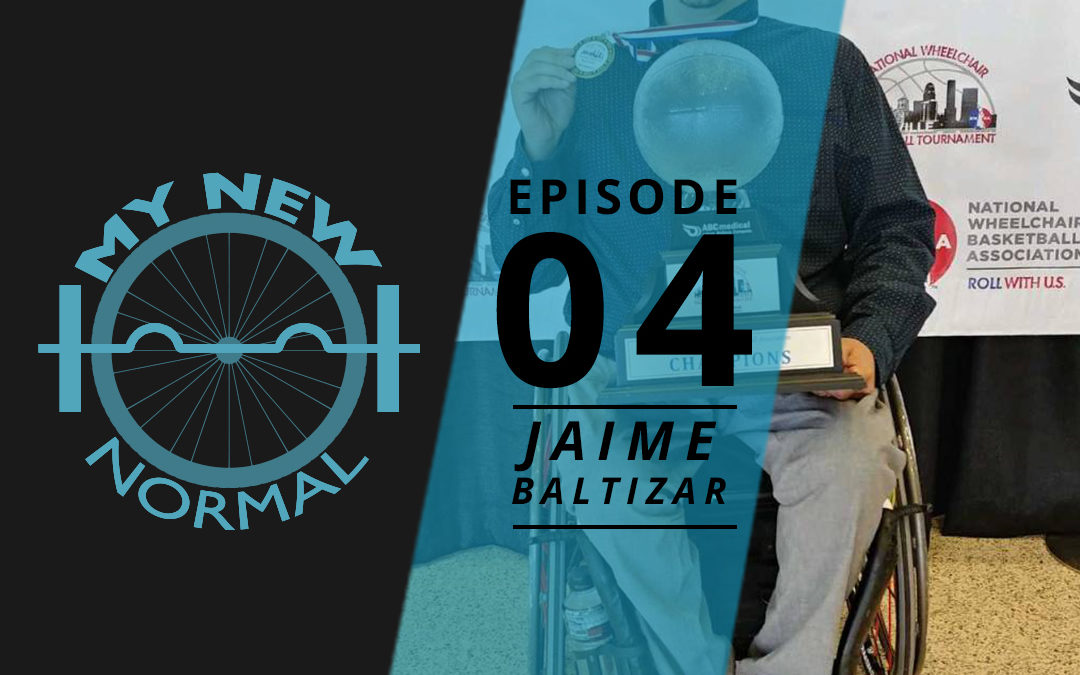
by 5dmin | Dec 11, 2018 | Blog, Podcast
Imagine this: you grew up in in bad gang ridden neighborhood in Chicago, your only escape was basketball, but before puberty was even over you lost the use of your legs. How would you deal with that? Many people would give up on life or give in to being a part of a gang to feel accepted.
Meet Jaime Baltazar. The previously mentioned hypothetical is his new normal and un like many others he did not give in or give up even when his surroundings would have made it easy. Instead he became a wheelchair basketball badass for University of Illinois and parlayed that skill into a career as a basketball coach. Tune into this weeks episode of the My New Normal Podcast to hear Jaime’s story and find out the secrets to his unwavering mindset.
Topics Covered on This Weeks Podcast Are:
- Jaime’s Story
- Dealing with judgement from living life in a chair
- Adapting to a chair sport after playing in out of the chair
- Dealing with gang violence
- The mindset of resilience
- The impacts of high intensity functional fitness on sport
Listen to My New Normal Podcast here:
To learn more about wheeled athletes & most common injuries that put someone in a wheelchair such as spinal cord injuries check out: https://www.drtheresalarson.com/wheeled-athlete-spinal-cord-injuries/
To check out my Functional Training for the Adaptive Athlete Online Course (eligible for 0.5 CEU’s for NSCA under Category D), visit: https://www.drtheresalarson.com/adaptive-trainers-course/
The Summary:
Today’s guest on My New Normal Podcast is Jamie Baltazar is the head coach of the San Diego Wolf Pack, which is an all military, wheelchair basketball team located in San Diego, CA.
I assisted on the team for a season and then had the great opportunity to continuously work with the athletes in my adaptive CrossFit programs.
Jaime (pronounced Hi-May) experienced a thoracic level 12, and lumbar level 1 spinal cord injury. He was shot just near the ribcage and has an incomplete spinal cord injury, but he hasn’t let that stop him and is absolutely crushing life.
Jaime grew up in Southside Chicago, in the Back of the Arts neighborhood, which was primarily Latino. He was raised by his grandmother, who kept him active in sports and the church to stay out of the gangs that really ran his neighborhood.
When he was 17 he was the victim of gun violence, in a “wrong place wrong time” situation where a gang retaliated, and he just happened to be in a place where the opposing gang hung out. He was shot while in his car, in his ribs and the bullet is still lodged in his spinal cord. The last memory Jaime has of using his legs is putting his car into park.
Fortunately for Jaime he was able to rehab at the Rehab Institute of Chicago, which ranks as the top rehab facility in the nation. Through that facility he continued to be involved in sports and was able to get a scholarship to the University of Illinois to play wheelchair basketball.
At Illinois, he not only won TWO championships with the team, he majored in Sports Management and minored in Sociology, and started to pursue his passion to work with at-risk youth.
God had different plans for him though, and he got involved with the Warrior Games and coaching wounded and ill soldiers in an Olympic style tournament. Through the Warrior Games, athletes then get picked to compete at the Invictus Games.
Jaime is an incredible individual and this episode is PACKED with information not only for adaptive athletes, but anyone that is needing to feel inspired.
In this episode we’re talking about:
- Jaime’s injury and how he adapted
- Wheelchair basketball and how to get involved
- How we can be more accepting to the adaptive community
- The challenges that Jaime faces daily
- Movements that can help wheelchair athletes adapt
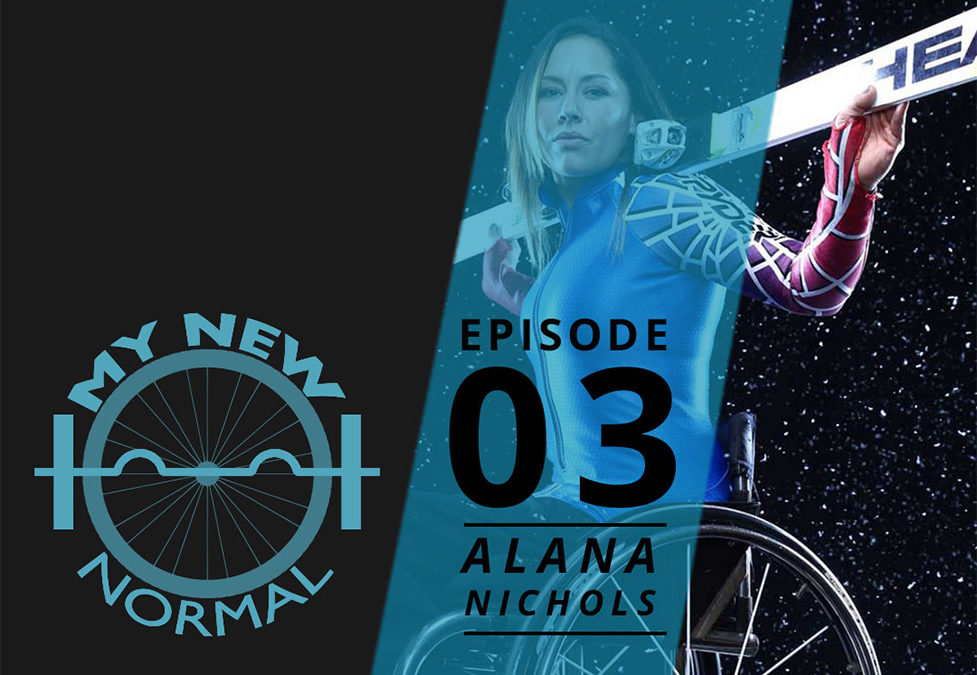
by 5dmin | Dec 5, 2018 | Blog, Podcast
On the 3rd episode of the My New Normal Podcast I am joined by my friend, former client oh and super bad ass Paralympic athlete Alana Nichols to talk about how she learned the character trait of resilience.
Alana broke her back during her senior of high school while attempting a back flip on her snowboard. At this point Alana was a highly recruited softball player in New Mexico and the injury completely destroyed her identity, but it didn’t stop her. She eventually became a 6 time medalist in the Paralympics.
Tune into this episode to hear Alana’s story and learn how she was adapt to her new normal and become more successful as a professional athlete than most of her able body peers.
- How Alana got injured
- Finding your identity post injury
- Finding your tribe
- Building empathy
- The importance of finding a coach who can challenge you and make you feel normal as an athlete
- How functional fitness can be applied to sports
- The conscious decision to be active as an adaptive athlete
Learn More About Alana Nichols
http://www.alanajanenichols.com/
https://twitter.com/alananichols21
https://www.facebook.com/alanajane21/
https://www.instagram.com/alanathejane
To learn more about wheeled athletes & most common injuries that put someone in a wheelchair such as spinal cord injuries check out: https://www.drtheresalarson.com/wheeled-athlete-spinal-cord-injuries/
To check out my Functional Training for the Adaptive Athlete Online Course, visit:
https://www.drtheresalarson.com/adaptive-trainers-course/
<<You can receive 0.5 CEU’s for NSCA under category D>>
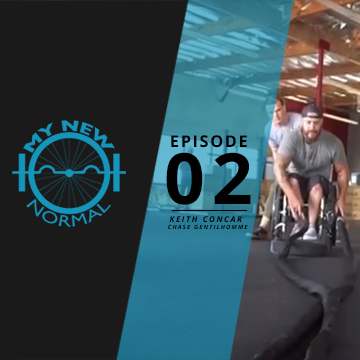
by 5dmin | Nov 28, 2018 | Blog, Podcast
I’m so stoked about this episode of My New Normal! I’m joined by Chase Gentilhomme, a Service Warfare Naval Officer, CrossFit Coach, Adaptive Coach, and soon to be Physical Therapist. And Keith Concar, an Adaptive Athlete, a giver, an empath, and a total badass who would do anything for anyone.
Keith fractured his spinal cord in a motor vehicle accident and has a T12 “incomplete spinal cord injury”. Which means he can still feel and has some access to levels below that injury.
This episode of MNN is about having a serious episode or injury in your life and either maladapting or adapting. Can you be resilient and change?
There’s a point after the injury or serious episode where you have to make the choice to search for the optimal instead of settling for your current situation. And that’s what it means to ADAPT instead of maladapting.
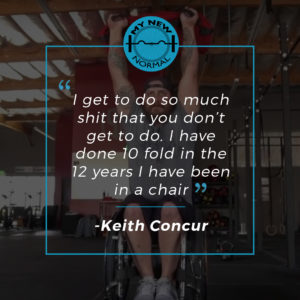 Keith’s injury occurred when he was down in New Orleans helping people during hurricane Katrina. He was hit while riding a motorcycle and was hospitalized for a month.
Keith’s injury occurred when he was down in New Orleans helping people during hurricane Katrina. He was hit while riding a motorcycle and was hospitalized for a month.
Instead of falling into depression with his new diagnosis of being paralyzed, Keith shifted his focus to the nurses and doctors he was surrounded with who had lost everything. He bonded with the people he had met while working in the city. He consoled and talked to the woman who hit him in the accident.
Keith adapted instead of maladapting.
While Chase doesn’t have an injury like Keith’s, his history is comprised of several injuries and surgeries. His story is one of constant adaption to find his passion which is working with people and adaptive athletes.
He started out as a college athlete and engineering major, then graduated with a major in Sociology. After working with athletes and doing some bodybuilding, he decided he wanted to serve his country and defend our freedoms, so he joined the Navy.
Upon joining the Navy, he found CrossFit and furthered in understanding of movement and functional movement. He went from wanting to be the strongest and fastest, to understanding that mobility and recovery is such an important part of maintenance and good movement.
When Chase arrived in San Diego he began to look towards what he’d do when he got out of the Navy and came full circle to Physical Therapy and met Dr. T.
Chase never settled and kept adapting.
Topics Covered On This Episode
- Ice Breakers: spirit animals, 5 words to describer yourself and what do you want to do when you grow up
- Origin stories
- First line of care for adaptive athletes
- How to mentally deal with traumatic injuries
- How to grow past “why do bad things happen to good people”
- Dealing with a diagnosis and learning how to not let it become you
- How to become an adaptive coach
- Putting yourself out there after trauma
- Weeding out people that don’t really matter
Listen to My New Normal Podcast here:
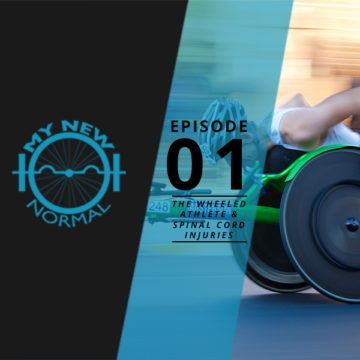
by 5dmin | Nov 21, 2018 | Blog, Podcast
When it comes to wheel chair and spinal injuries there is always a what’s next despite what your doctor says. Often times people dealing with spinal cord injuries or family members helping a loved one who has a spinal cord injury can feel hopeless. On Episode 1 of the My New Normal Podcast I sit down to educate on conditions that most commonly put people into wheelchairs. On this episode I get into the nitty gritty of the diagnosis and then spend some time talking about why your diagnosis is not your new normal, because it does NOT determine your function.
Topics Covered On The Podcast
- The 4 most common reasons people get put into wheelchairs
- The basic anatomy of the spinal cord and what happens in spinal cord injury
- Bodily systems that can be effected by a spinal cord injury (Integumentary, Cardiovascular…etc)
- AIS/ASIA scale of spinal cord injuries and ABCDE classifications
- My levels classification system for adaptive athletes with a spinal cord injury and how to adapt movements based on this screen
by Theresa Larson | Oct 31, 2018 | Blog
In Honor of World Mental Health Day (October 10, 2018)
We talk a lot about freedom in the United States of America.
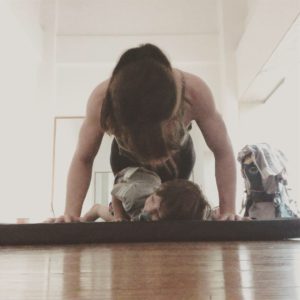
The freedoms we have in the US of A are amazing. However, an increasing amount of people really don’t get to experience them.
Why?
Depression.
According to the World Health Organization, depression is the leading cause of disability globally. Over 300 million adults across the globe are depressed right now, with 16.2 million of those in the US. A full 10.3 million of those Americans experience an episode that is categorized as ‘significant impairment’.
So are we truly free if depression is on the rise?
Depression, in my experience, is the ultimate freedom killer. So to cut right to the important stuff, here are my C.O.R.E principles I try to follow to manage how I feel. Use these or share these to help you or others fight this invisible wound and take freedom back.
1: I love Anais Nin’s quote, “Our world shrinks of expands in proportion to ones courage.” It takes real courage to stand up to what you fear or are feeling low about. When it comes to depression, I find it helps to stand up to “it” like it is something you do not want in your life, and see it as something you want removed. Remember this disease is NOT you, rather something you struggle with. Shift your focus to how much you have grown and start to help someone else grow around you.
2: It takes breathing hard (exercise) and breathing slow and deep (meditation) to really reap the benefits of what oxygen can do for your body. None of this shallow mouth breathing we typically engage in. Get at least 30 minutes of exercise or movement 5 days a week, and on top of that 5-10 minutes of deep slow breathing a day. With the breathwork, focus on keeping your breath rate to 6-8 breaths per minute. If you want to get even simpler, the next time you have a “reactive” thought come into your head, consider taking 1 loooong breath sequence before you do anything else. Take a 10 second inhale, hold it for 10 seconds, exhale for 10 seconds, and wait 10 more seconds before the next breath. Do that once before you react/feel low and see how it helps you. Think of it as a free drug.
3: Rest. You must sleep 7-9 hours a night according to the National Sleep Foundation. For me this is non-negotiable. I have a toddler so some nights are questionable, but you better believe I protect my sleep like my son protects his binkie.

4: It takes time for tissue to change – up to 12 months for connective tissue depending on the tissue and if it was injured. So start to tend to your gnarly parts and stiff areas DAILY. Areas with a big bang for your buck are your thoracic spine, your side butts, and your upper traps (those pieces of meat riding up to your ears). Mobilizing these is a physical way to relax your physiology. In conjunction with breath-work, it’s amazing. Don’t forget that eradicating stiffness takes time, so spend a minimum of 10 minutes a day on this.
You better believe I take my own advice. Even though I’m traveling, I am working on my C.O.R.E. daily because I know that my future mind and body will thank me for being consistent.
So there you have it. Four C.O.R.E. tools to help navigate depression.
Remember, it’s a daily task. It’s a process, not a pill.
PS. I am not saying medication, hormone therapy, or some other medicinal resources are not helpful. But consider what you can do RIGHT NOW as you read this. If you are interested in learning more about this invisible wound and what you can do about it, listen to Episode 1, of the The My New Normal podcast coming Nov 14th on how to build an unbreakable mind.
by Theresa Larson | Oct 30, 2018 | Blog
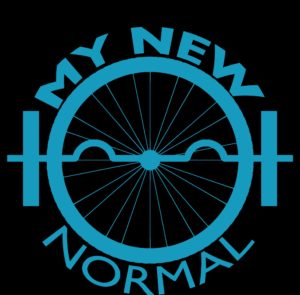 So what does My New Normal mean?
So what does My New Normal mean?
To me, it means that regardless of past injury, loss, trauma or change, you are taking your health and destiny into your own hands. I’ve been refining this concept of My New Normal over the last couple of years, and I’m pleased to announce that it am launching a podcast about it in November!
Upcoming newsletters will include exclusive episodes on overcoming adversity and the science behind the methods that have helped me and many others overcome challenges to get where they are today.
The 3 pillars of this My New Normal movement are:
- MINDSET
- FUNCTION
- RECOVERY
These pillars are based on science, history, and practical application daily by yours truly and many others who have come before me.
Stay tuned for upcoming info on the podcast!
And now for something COMPLETELY different…
My family and I are traveling to India for the month of October. That will be my new normal for the month. I don’t like crowds, but it doesn’t get much more crowded than India. While India is half the geographic size of the U.S., it has 4 times as many people (1.3 billion).
Nevertheless, I am going into this eyes wide open and prepared to experience something that makes me uncomfortable. How else do we truly grow? While I love my community here in San Diego, I love experiencing, learning, and living in other cultures. I gain so much perspective on life from doing this, and it reminds me of yet again what is truly important. Not money, things, or vanity, rather time with those I love and collecting experiences.
So what are we going to do there? Definitely going to try out for a Bollywood film, dance, take naps, visit small lands that are densely populated, work a little, write, hike, maybe chase down the Dalai Lama in his exile, meditate, do yoga, and hang with the locals.
P.S. Stay tuned for Episode X, coming Nov 14th where my husband and I uncover all things “My New Normal” and what this podcast is all about.




 Keith’s injury occurred when he was down in New Orleans helping people during hurricane Katrina. He was hit while riding a motorcycle and was hospitalized for a month.
Keith’s injury occurred when he was down in New Orleans helping people during hurricane Katrina. He was hit while riding a motorcycle and was hospitalized for a month.


 So what does My New Normal mean?
So what does My New Normal mean?